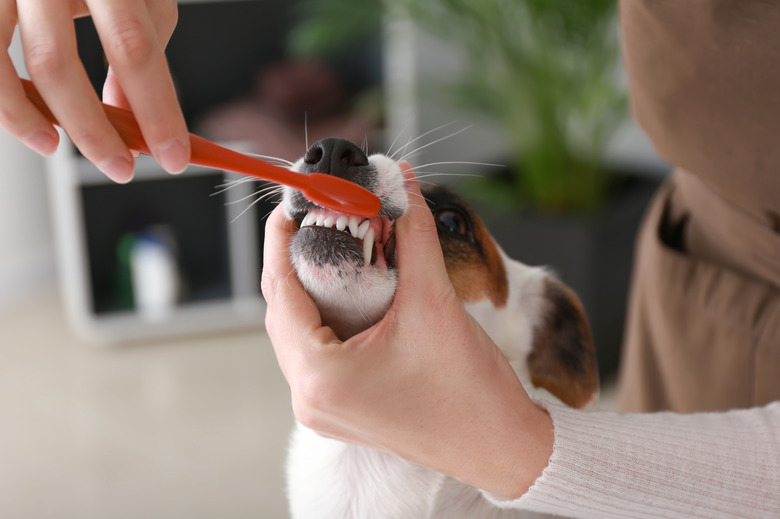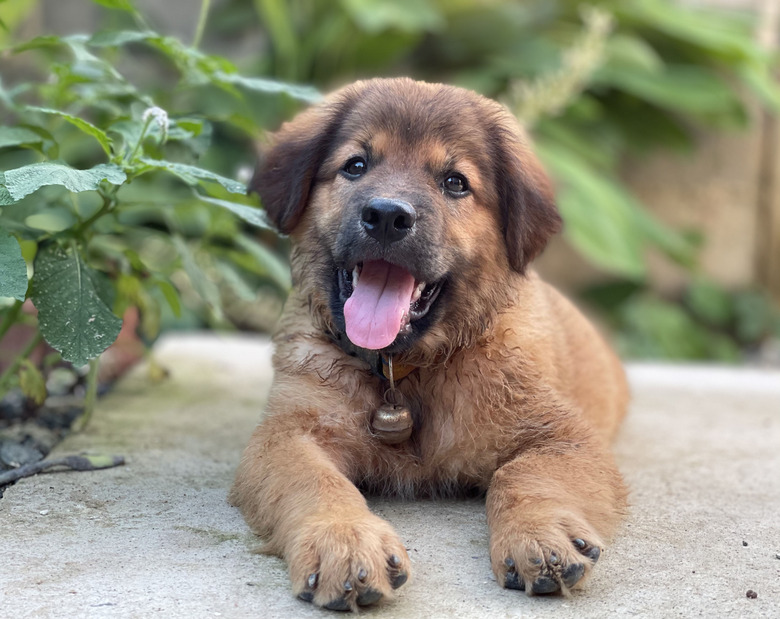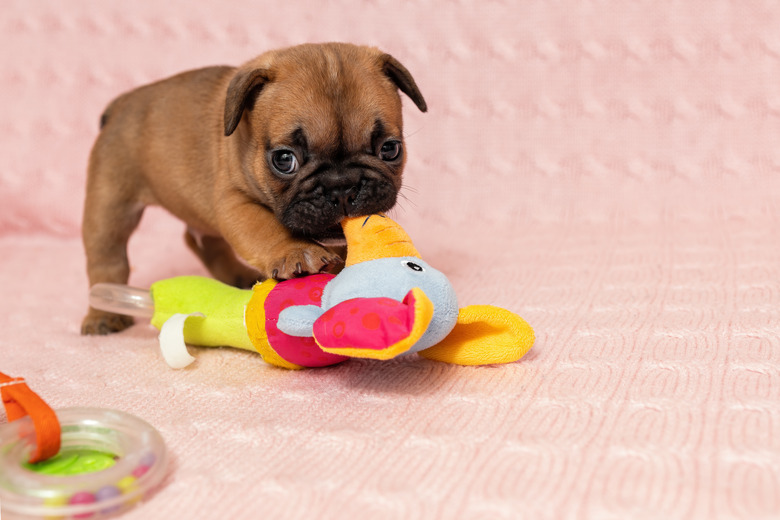Difference Between Puppy Teeth & Dog Teeth
Besides being white and having a sharp surface, puppy canine teeth and adult canine teeth are different in many ways for the simple fact that they were designed for different purposes. As the name implies, puppy teeth are present during puppyhood, and as the puppy grows, adult teeth replace them gradually over the course of several months. Knowing the difference between puppy teeth and dog teeth can help you detect early signs of trouble that may require a veterinarian's attention.
Purpose of puppy canine teeth
Purpose of puppy canine teeth
Those sharp, needlelike teeth adorning a puppy's mouth have several purposes. From an evolutionary standpoint, pups have sharp teeth to compensate for their lack of strong jaws, and they allow them to tear up the first meat samples the mother dog carried to the den. Those sharp little dagger-like teeth also play a role in the weaning process.
Vigorous nursing with sharp teeth is painful, even for the most patient of moms. Mom's reluctance to nurse prompts the pups to seek out alternate food sources. Finally, sharp puppy teeth teach rough pups to gauge their bite pressure when playing with their siblings and mom, a fundamental life lesson that will make them safer companions as they mature into dogs with powerful jaws.
Adult dog teeth are stronger
Adult dog teeth are stronger
As the dog's jaws become stronger and larger, puppy teeth are no longer adequate. Being brittle as they are, they certainly aren't meant to withstand the wear and tear associated with being a grown up, meat-eating dog. Although less sharp, adult dog teeth are sturdier and built to tear, puncture, chew, and grind food into smaller parts that are easy to swallow. Additionally, adult dogs need those teeth for attack and defense purposes. Unlike the more delicate puppy teeth, adult dog teeth are purposely designed to last a lifetime.
Puppy teething lasts several months
Puppy teething lasts several months
Puppy teeth start to emerge between 3 and 6 weeks of age and are finished erupting by 8 weeks of age. Puppy teeth are only present for a limited period of time, which is why they are called deciduous or milk teeth. Around 3 months of age, the puppy teeth start falling out, and around this same time, the first adult, permanent teeth start erupting. Sometimes, though, puppies they can have retained deciduous teeth and will need them extracted by a veterinarian.
During this time, puppies may present with a mix of baby teeth and permanent teeth. The permanent teeth erupt in stages starting with the incisors around 12 to 16 weeks old, followed by the canines at 22 to 26 weeks, the premolars at 26 weeks, and finally the molars between 10 and 11 months. By the time the puppy is 10 to 12 months old, all permanent teeth should be in place. Monitoring the teething process as the permanent teeth come in is important to ensure no baby teeth are retained or malocclusions occur, which can cause problems.
Teething typically gives the puppy an urgency to chew things to soothe the pain in their mouth. You may see an uptick in destructive behaviors as they find furniture or clothing to chew. It is important to provide a teething puppy with appropriate chew toys to help them during their teething.
Number of puppy teeth is less than adult teeth
Number of puppy teeth is less than adult teeth
Puppies are given 28 baby teeth. Because puppies will mostly nurse during their first weeks of life and won't eat much hard food, they won't need to grind much, which explains why they lack molars. They'll need molars later, though, so they can crush bones and eat other hard foods. Most adult dogs have 42 teeth comprising two canines, six incisors, eight premolars, and four molars in the upper jaw and two canines, six incisors, eight premolars, and six molars in the lower one.
Puppy teeth vs. dog teeth dental health
Puppy teeth vs. dog teeth dental health
Other than having different purposes, emerging at different times, and coming in different numbers, puppy teeth and adult teeth look different too. One of the most evident differences is size. Despite having very long roots compared to the overall size of the tooth, puppy teeth are considerably smaller than permanent teeth. When it comes to color, recently erupted permanent teeth have a brighter white color compared to their precursors.
Adult teeth require more dental care from you than puppy teeth to help avoid tartar buildup and periodontal disease. It is a good idea to start conditioning your new puppy to tooth brushing as soon as they come home to set them up for a lifetime of good dental health.
The bottom line
The bottom line
Puppy teeth serve different functions than adult teeth and therefore have a different structure. Puppies have fewer deciduous teeth than they have permanent teeth. Puppy teeth are smaller, and they lack their molars since puppies do not have to tear or grind their food. Puppy teeth are also razor sharp to help the individual learn about bite pressure and inhibition. Thankfully, adult teeth replace puppy teeth by the time they are 1 year old (if that doesn't happen, talk to your DVM). Providing proper chew toys and dental care is important for a lifetime of good dental health.


